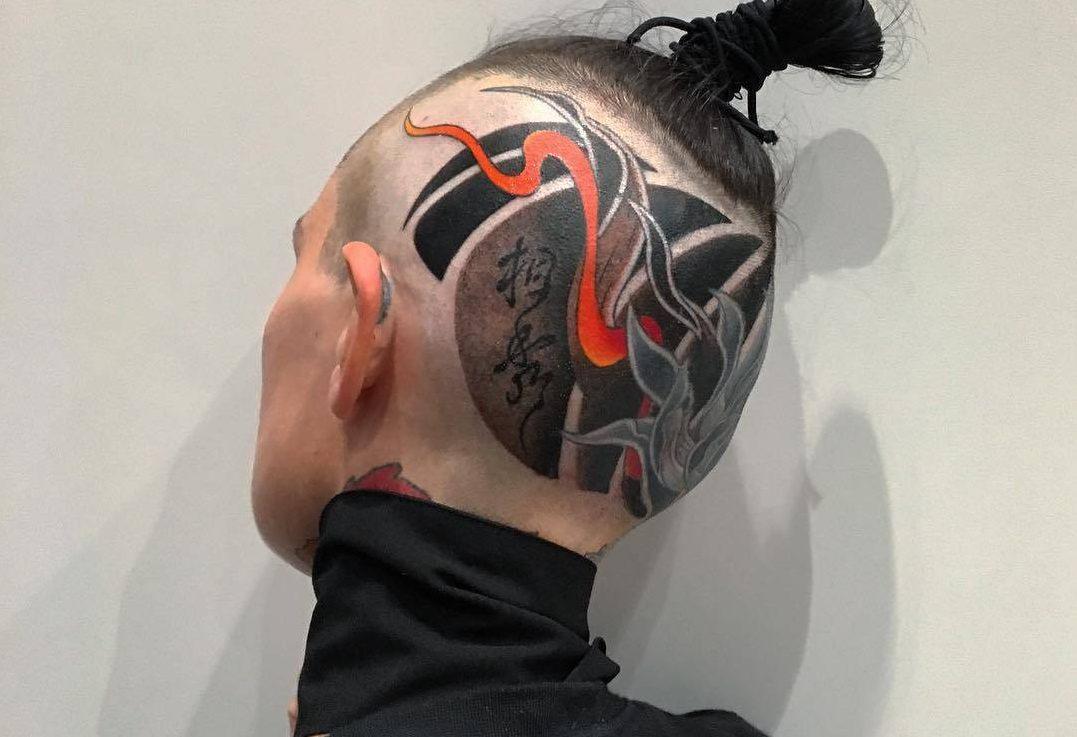
History and meaning of Japanese tattoos
Contents:
Japanese tattoos surprise and fascinate with their deep meaning, colors and volumes.
In the article, we will tell you the features of such wearable pictures, express our point of view regarding which tattoos are more suitable for girls and men. You can admire and select original images by viewing our gallery of photos and sketches.
How did the style originate?
Japanese tattoos are believed to have evolved from Polynesian designs. They were "brought" by the Ainu - the indigenous population of the Japanese islands, which lived next door to the people of the rising sun. Initially, wearable paintings were performed as an abstraction, but after the influence of Chinese culture, the outlines of animals and fish gradually emerged. Other sources suggest that Japanese paintings came from China. The Japanese adopted Buddhism and painted texts of prayers, images of Buddha and various guardian gods on their bodies.
Japanese tattoos changed in meaning and plot, because in each era a new ruler dictated his own terms. When choosing a Japanese-style underwear picture, it is better to take into account that its meaning may change in the future.
Popular plots
Japanese paintings are a desire to express yourself, to show your power, strength and courage. How do Japanese-style tattoos differ from other designs?
- Symbolism. Each element has a deep meaning. Its meaning depends on the location and additional elements, so each image is carefully thought out by the master.
- Large sizes of paintings. The master fills them in several stages, which can take several years.
- Visible parts of the body are not covered: hands, feet, strip for the "opened robe", neck.
- Brightness and brilliance of colors, play on contrast.
- Asymmetry of drawings. The meaning of a Japanese tattoo depends on its location on the body.
- Neck. The owner is the bearer of the secret or demonstrates his own special qualities inherent only to him.
- Hand. The owner knows what he wants from himself and those around him, he is decisive, with a strong character and spirit.
- A tattoo on the chest is a challenge to others.
- Pattern on the back - internal protection and domination. The owner seeks to show his capabilities and potential.
- The image on the leg is movement and the desire to achieve the set goals, sometimes it is interpreted as a search for support.
- The forearm is chosen by courageous and strong men.
Learn more about symbology
Japanese hieroglyphs... According to legend, Emperor Jimma conquered Queen Senoyatataru with his body drawings and inscribed the name of his beloved, adding the hieroglyph "life". After that, many couples began to follow his example in order to perpetuate their feelings, to prove devotion and love for the rest of their lives. It is worth carefully applying the signs, because individually they have one symbol, and in the sentence they have a completely different one.
Of particular importance are Yakuza or Irendzumi tattoos. They are mainly painted with red and black pigments. The plot is dominated by religious motives, gambling, everyday situations and figures in motion. It is believed that it was the Yakuza crime family who introduced huge Japanese tattoos for men. They mean strength and courage... These are snakes wriggling in zigzags and dragons, realistic fish scales.
Girls and men often have a Japanese dragon tattoo, which means strength, loyalty, nobility. For firefighters, the fairytale character became a defender from fire, for emperors he was a symbol of power. Often printed in the Western style: no shading, the contours are filled with a uniform color and no transitions. The dragon is often depicted with the body of a snake, horns or ears of a bull, then its symbolism becomes broader. If a monster wraps around a sword and looks ahead with red eyes, a tattoo means power and strength, in the clouds - determination for the sake of freedom.
Popular japanese carp tattoo, it is performed in orange and red colors, mainly along with waves. Differs in decorativeness and dynamism, means courage, composure in front of inevitable fate. Businessmen, travelers and athletes fill this picture in a golden hue as a sign of good luck and financial well-being.
Of particular importance is the picture of the red-skinned child Kintoro. It symbolizes courage and strength, and with a blue belt - thinking. He is often depicted naked and fighting carp.
Flower motifs Is another feature of Japanese tattoos. Men use them as an additional element in their wearable composition. Often there is a peony with a lion - a balance of power and beauty. Samurai applied cherry blossom branches with chrysanthemums to their bodies to show the enemy their fearlessness and willingness to die in battle. For girls, cherry blossoms are a symbol of beauty and transience, in some cases - a sign of sadness. Beautiful ladies stuff a tiger (perseverance and power), a phoenix (rebirth and celebration), a dragon with a snake body, a Koi carp. The girls are relevant Japanese mask tattoos, especially Chania... According to legend, one monarch rejected a Japanese woman, but the beauty decided to take revenge and turned into a demon. Such a mask denotes the insidiousness of an offended woman.
Girls often choose the image of demons, monsters and werewolves of small sizes to fit on the shoulder blade, forearm and thigh. Such pictures protect from evil and deceit, symbolize faith in the spiritual world and act as a punishment for injustice.
The men wear the mask of the demon. They carry a weapon that looks like a metal spear with spikes. It denotes strength and vitality. Often there are images of warriors, landscapes, the rising sun, battles of samurai with demons, mythical creatures.
Japanese tattoos, despite the plot, are always aesthetic and attractive.
































Leave a Reply